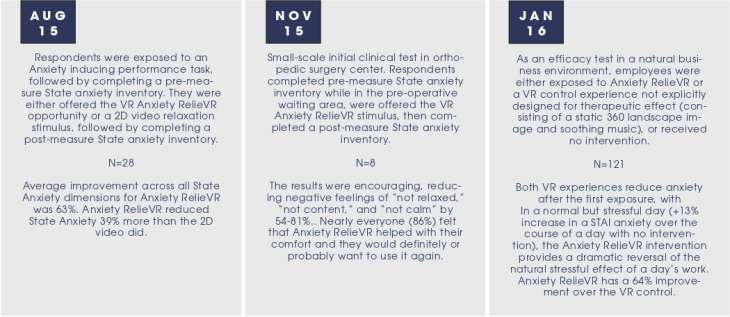Put away those pills, VR may be the only painkiller you need

When you hear the term 'virtual reality'(VR), you immediately think of entertainment. From video games to movies, virtual reality takes the concept of an immersive experience to a whole new level, allowing users to be a part of the action.
However, the potential of VR goes far beyond just the realm of fun. In fact, if AppliedVR has its way, VR may soon move from the confines of your living rooms to hospital rooms across the world. Their vision? A world where pain killers are replaced by VR headsets.
The history of VR in healthcare
While the thought of VR in healthcare, let alone pain relief, might seem new to some, it has actually been around for a while.
Hospitals and medical schools around the world are already spending hundreds of thousands of dollars on VR gear. With this they are able to train students through simulated surgery that allows them to carry out the procedure without the use of cadavers or, worse, actual patients.
It provides healthcare professionals with an environment to practise potentially lifesaving procedures without an actual life being on the line. This comes in especially handy when it comes to rare conditions with little scope for surgical practise.
That's just for healthcare providers, though. But VR has found uses with patients as well, primarily in rehabilitation. Since the late 1990s, the technology has been used to help soldiers overcoming PTSD as well as to help patients deal with their phobias through exposure therapy, while keeping patients in a safe space.
VR has been used to help autistic children develop social cognition skills, to treat patients with anxiety and depression and even help stroke victims.
Also Read - A robot just performed autonomous surgery. The future is now present
However, most of this technology has been fairly expensive. Almost prohibitively so for individuals and even healthcare facilities in the developing world. However, that's about to change thanks to the advent of head mounted devices (HMD) like the Oculus Rift and Google Cardboard.
The democratisation of VR and Pain relieVR
Devices like Oculus Rift have lowered the price point of VR significantly. Where you once needed to spend tens of thousands of dollars for the technology, it's now possible to access it at a tiny fraction of that cost.
And this is where AppliedVR comes in. AppliedVR is not building VR headsets. Instead, they're developing clinically tested virtual reality experiences to help patients with pain relief. The company describes itself as a "'Netflix' platform of validated therapeutic content."
Also Read - Virtual reality brings new dimension to conservation
This therapeutic content is administered to patients through Samsung's Gear VR headsets.
Their aim is to provide an alternative to the chemical pain relief options currently offered to patients. In their own words, "to provide a totally mobile, user-friendly, virtual reality platform that offers patients drug-free alternatives for managing pain and anxiety associated with medical procedures."
To do this, they've partnered with Cedars-Sinai Medical Centre in Los Angeles, USA. Cedars-Sinai, which incidentally, is an investor in the company, has been testing AppliedVR's content on their patients. The results thus far are promising.
Also Read - Can't digest this: after wearable tech, it's time for swallowables
In pre-clinical studies conducted by the company, users were asked to dip their hands in water that was between 0-4 degrees Celsius for as long as possible. It was found that, on average, the company's Pain RelieVR products increased pain tolerance by up to 136%.

Even Anxiety RelieVR, a product meant to treat, you guessed it, anxiety, demonstrated reductions of anxiety between 54% and 81%. And that's across clinical, non-clinical and even corporate environments.

Speaking to Technology Review, Brennan Spiegel, who heads health service research at Cedars-Sinai, spoke of a study they conducted that showed positive results. According to researchers at Cedars-Sinai, just 20 minutes of VR exposure can reduce pain by up to 24%. A reduction comparable to the use of drugs.
While it's still early days in the research and development of VR to mitigate pain, the data so far seems to suggest that virtual reality painkillers may soon be a reality.
First published: 20 July 2016, 1:58 IST






![BJP's Kapil Mishra recreates Shankar Mahadevan’s ‘Breathless’ song to highlight Delhi pollution [WATCH] BJP's Kapil Mishra recreates Shankar Mahadevan’s ‘Breathless’ song to highlight Delhi pollution [WATCH]](https://images.catchnews.com/upload/2022/11/03/kapil-mishra_240884_300x172.png)

![Anupam Kher shares pictures of his toned body on 67th birthday [MUST SEE] Anupam Kher shares pictures of his toned body on 67th birthday [MUST SEE]](https://images.catchnews.com/upload/2022/03/07/Anupam_kher_231145_300x172.jpg)






